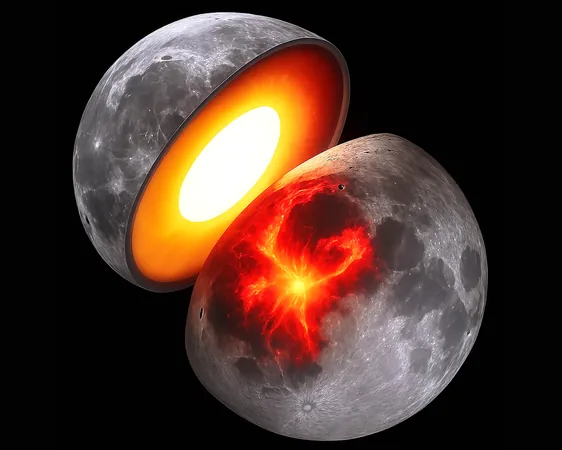
Unlocking Cosmic Secrets: NASA Probes Planetary Interiors Using Gravity Data
2025-05-21
Author: Daniel
NASA's Groundbreaking Gravitation Studies
In a stunning leap forward, NASA has unveiled intriguing insights into the deep interiors of the Moon and the colossal asteroid Vesta—without a single spacecraft touching down. Two new studies harness the power of gravity data to illuminate planetary structures hidden beneath their surfaces.
Precision Tracking Technology
Led by Ryan Park at NASA's Jet Propulsion Laboratory, researchers utilized radar measurements from orbiting probes to map the Moon's gravitational field in unprecedented detail. By monitoring slight alterations in spacecraft trajectories, scientists glean valuable information about what lies beneath.
"Gravity is a unique and fundamental property of a planetary body that can be used to explore its deep interior," Park explained, emphasizing how precise tracking of spacecraft motion can offer a global picture.
A Closer Look at the Lunar Surface
Through data collected from twin lunar probes, Ebb and Flow, which operated from December 2011 to December 2012, the team created a sophisticated gravity map that revealed surprising disparities between the Moon's near and far sides. The analysis uncovered a phenomenon known as 'tidal deformation,' which highlighted significant structural differences based on how Earth's gravity interacts with the Moon.
"The near side flexes more than the far side, indicating a temperature variation in the upper mantle rich with radioactive elements," Park noted. This warmth would have kept volcanic lava active on the side facing Earth, creating the sprawling maria, while the far side remained rugged and untouched.
Vesta's Mysterious Make-Up
Turning to Vesta, researchers confronted a cosmic puzzle. Common belief suggested that this ancient asteroid should exhibit distinct layers—a solid iron-nickel core encased in a rocky mantle and basaltic crust. However, new findings reveal a surprisingly uniform interior.
The wobbling motion of Vesta allowed scientists to measure its moment of inertia, providing crucial insights into its internal structure. Rather than layered, Vesta may be more homogeneous, challenging existing theories about how celestial bodies cool and evolve.
Astounding Technological Achievements
Both studies required years of intricate calculations and extensive supercomputing power. Researchers navigated a myriad of variables, from spacecraft dynamics to solar radiation, to perfect their models. Matching simulated spacecraft behavior with historical flight data enabled them to identify buried structures accurately.
Future Prospects in Cosmic Exploration
The implications of these findings extend beyond our lunar companion and Vesta. With a refined methodology, scientists can explore other celestial targets, including the Martian moons, Phobos and Deimos, as well as dwarf planets like Ceres and rubble-pile asteroids explored by missions such as OSIRIS-REx.
As researchers continue to decode the gravitational signatures of these bodies, our understanding of planetary formation and evolution may undergo a significant transformation.
Conclusion: New Insights into Our Cosmic Neighborhood
These groundbreaking studies not only deepen our understanding of the Moon's hidden thermal sources but also ignite new questions about the origins of Vesta. By merging advanced technologies with observational data, scientists are crafting narratives of cosmic evolution that might redefine our perspective of the solar system.


 Brasil (PT)
Brasil (PT)
 Canada (EN)
Canada (EN)
 Chile (ES)
Chile (ES)
 Česko (CS)
Česko (CS)
 대한민국 (KO)
대한민국 (KO)
 España (ES)
España (ES)
 France (FR)
France (FR)
 Hong Kong (EN)
Hong Kong (EN)
 Italia (IT)
Italia (IT)
 日本 (JA)
日本 (JA)
 Magyarország (HU)
Magyarország (HU)
 Norge (NO)
Norge (NO)
 Polska (PL)
Polska (PL)
 Schweiz (DE)
Schweiz (DE)
 Singapore (EN)
Singapore (EN)
 Sverige (SV)
Sverige (SV)
 Suomi (FI)
Suomi (FI)
 Türkiye (TR)
Türkiye (TR)
 الإمارات العربية المتحدة (AR)
الإمارات العربية المتحدة (AR)